
Transport Icons From Around the World
An eBook by Cyril J Wood

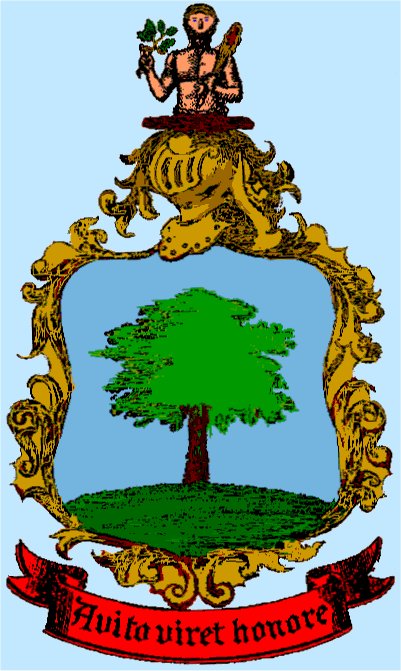

Since childhood I have had an interest in various forms of transport. In fact, my earliest interest was trains. One of my earliest memories is being pushed across the docks in my Silver Cross pram by my mother on one of her shopping trips to Birkenhead and of seeing a rather large 0-6-0 outside cylinder tank engine pulling a rake of goods wagons. "Tay-tayts" I proclaimed... referring to the connecting rods and valve gear that, sixty years on, even to this day, they still get called. My brother Jim had a wonderful Trix Twin 00 scale model railway layout in our attic and we spent many happy hours watching the various locomotives running around the ever-changing layout. I had an elevated view from my chair which we nicknames "The Perch". Whilst I was deemed too young for an electric train set I had to make do with my Lone Star Locos... die-cast model trains that were pushed along the track by hand which were 000 scale - what we would call N Gauge today. I still have them to this day although they are now looking a little the worse for wear!
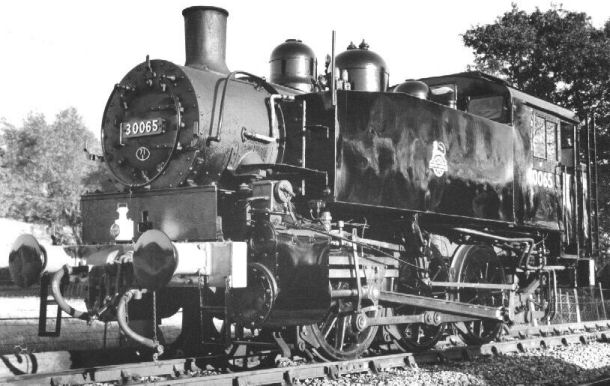
American 0-6-0 steam locomotive (nice "tay-tayts") as seen on Birkenhead Docks when I was a child
The next interest was cars. I had a collection of "Matchbox", "Dinky" and "Corgi" model cars that I still look back at with fondness. At one point I actually had all seventy two "Matchbox" models as listed in their catalogue! Today I still have a few models of my favourites. As I grew older the interest in cars spread to aircraft, ships and boats. As a child our family home was on Egremont Promenade in Wallasey, overlooking the River Mersey. I would spend many happy hours watching the ships ply up and down the river and identify them from my trusty copy of "Mersey Shipping" given to me by a neighbour who worked for the Mersey Docks and Harbour Board. My interest in boats was fuelled by my parents hiring a canal cruiser in 1960 as documented in the "Canalscape" section of the website. I hope to share with you some of my favourite examples from each means of transport... plus a few surprises in the Miscellanea section. In the interest of Internet space I have limited each section to ten entries (there are 13 entries in cars but the Morris 1000, Austin A30/A35 and Mini count as one as they share the same engine - the legendary BMC Series "A").
The first car that I fell in love with was the 1959 Ford Thunderbird as featured in the American TV series "77 Sunset Strip". When watching the TV programme shots featuring the white convertible of this car were eagerly awaited. Imagine my excitment when Corgi released an exact copy of the car... I couldn't wait to spend my pocket money on one when it finally reached my local toy shop - Mr Hill's Post Office on King Street in Wallasey.

The 1959 Ford Thunderbird Convertible
TV programmes are renowned for promoting cars. "The Sweeney" had the Ford Granada, "The Professionals" had their Ford Capri, "Morse" had his Jaguar Mk II and "Jason King" had the most beautiful of all... the Bentley Continental S2 Flying Spur with special bodywork by H J Mulliner (and Swiss number plates). Who said that Jason King didn't have good taste?
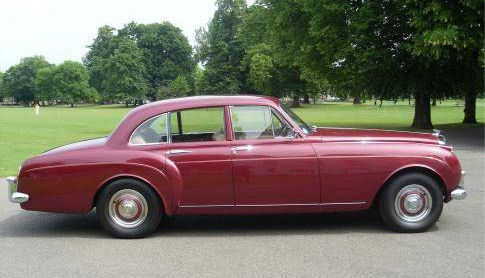
1960 Bentley Continental S2 Flying Spur
The next on my list of desirable automobiles is the Ford GT40. Not really a Ford it was built by Lola for Ford to compete in the Le Mans 24 Hour Race and put an end to Ferrari's domination of this race from 1966 to 1669. It was called the GT40 because it was forty inches high and could not accommodate drivers above about five feet eight inches. Taller owners would have to have a special bubble fitted in the roof to allow them to fit in! More recently, Ford resurrected the design with the Ford GT using modern technology and engines. Whilst still very nice I don't think that it possesses the indefinable magic of the original.

1969 Ford GT40...
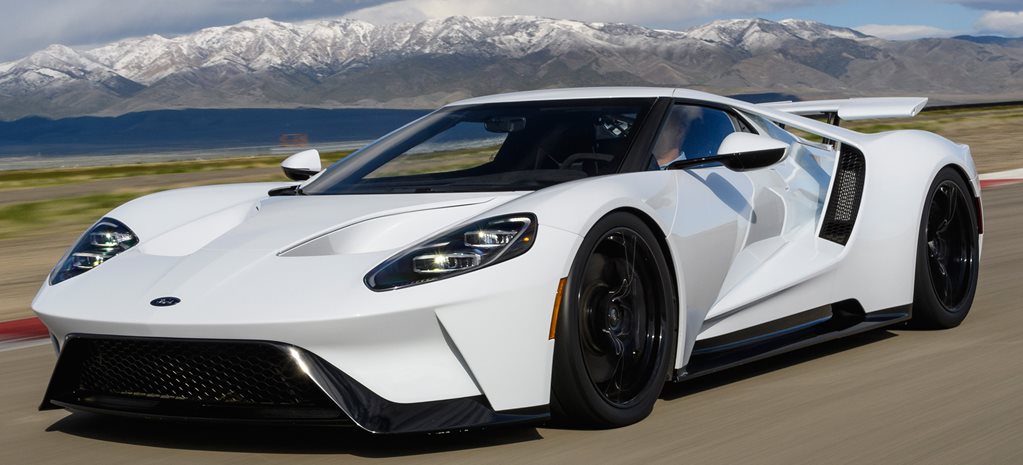
...and a 2017 Ford GT
Another sports car comes next... and in my mind one of the most beautiful cars of all time... not the E-Type Jaguar but the AC Cobra.. which to my eyes is far more uncluttered in its design. Originally the AC Ace, this was modified, lowered and given an American V8 by Carroll Shelby,an ex-racing car driver. It is a testament to the concept that forty years on the car is still in production by AC Cars of Brooklands and with modern engines and technology it can now reach 200 mph!
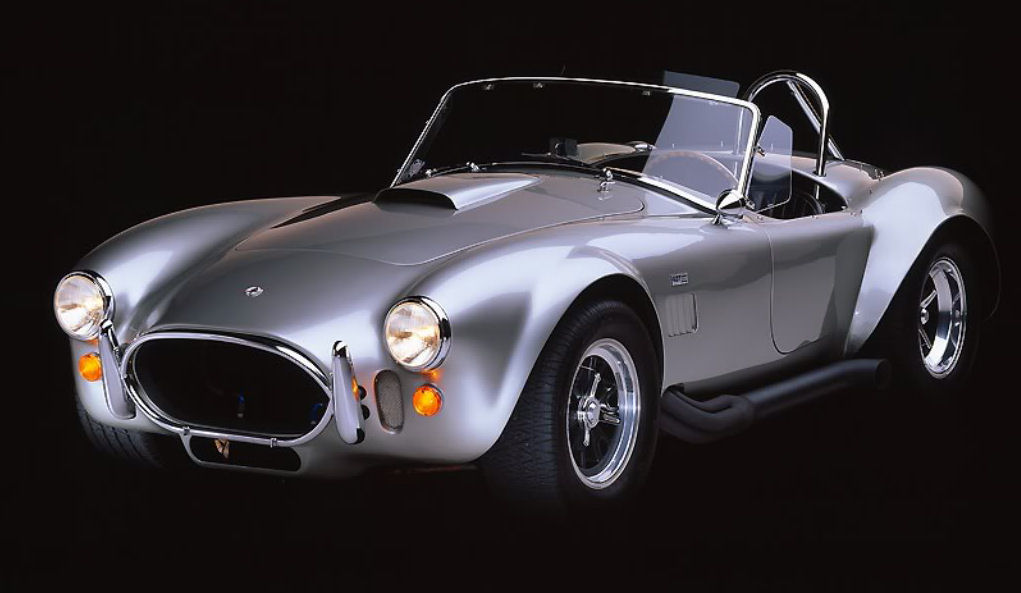
One of the most beautiful cars of all time... the AC Cobra
The French Monica V8 is a high-speed luxury touring saloon from 1973-75. By combining a lightweight four door saloon body with a Martin V8 racing car engine (later replaced by an American Chrysler 5·6 litre V8) 150 mph performance was no longer the domain of sports cars. This beautiful car was only in production for a couple of years but it made its mark in the automobile world as is exhibited by the number of cars sharing the concept such as the Aston Martin Lagonda and Rapide, Porche Panamera, Maserati Quatroporte and the recently announced Bentley Continental Flying Spur (not the model listed above).
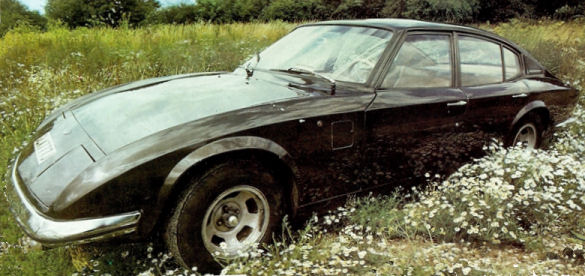
Monica V8 High Performance Luxury Saloon
The British Motor Corporation was renowned for making inexpensive, economical and versatile small cars. Three models are listed here as I cannot choose one in particular. The Morris Minor started life in 1946 as a replacement for the Morris Motor Company's ageing pre-war designs. This brainchild of Alec Issigonis (who went on to design the Mini) nicknamed the "Moggie Minor" was produced in two door, four door, van, Traveller (estate), pick-up and convertible models as was its Austin stable mate the smaller A30/35. Production ceased in 1971 after 1·3 million examples had been produced. The Austin A35 and the later A40 were more primitive in some ways than the Minor but it shared it the legendary BMC Series A engines. Everyone knows the original Mini launched in 1959 but few will remember the utility version of it... the Mini Moke. Designed to be transported by helicopter, this light weight vehicle could even be ordered as a four wheel drive version fitted with two engines... one for the front wheels and one for the rear wheels. This was known as the Twinnie Mini Moke and was a popular entrant in autocross competitions. Until recently it was still built in Australia but BMW... the new Mini's owners have a modern Moke on the drawing board to compliment their Clubman and Countryman models.
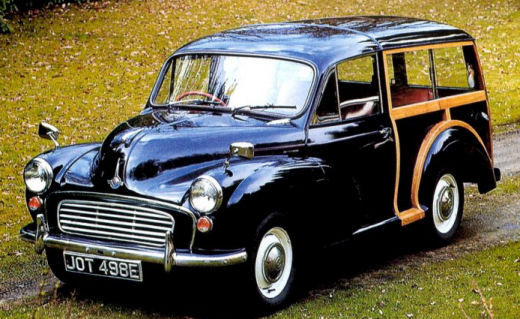
Morris Minor 1000 Traveller

An extremely rare Austin A35 Pick-Up
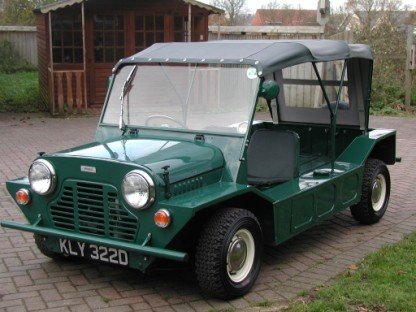
The utilitarian Mini Moke
A more affordable car for today is also the ultimate go-anywhere car. None other than the Land Rover Defender. The basic Land Rover design is now over sixty years old and the Defender sticks faithfully to the concept and appearance of the original models. I was tempted to list the Austin Gypsy here instead of but in the end I didn't due to the long production life and versatility of the "Landie". At home up a mountain or in Asda's car park it is available in two wheelbases (90 and 110 inch) and an infinite number of variations and engine options this car has stood the test of time and should do so for decades to come.
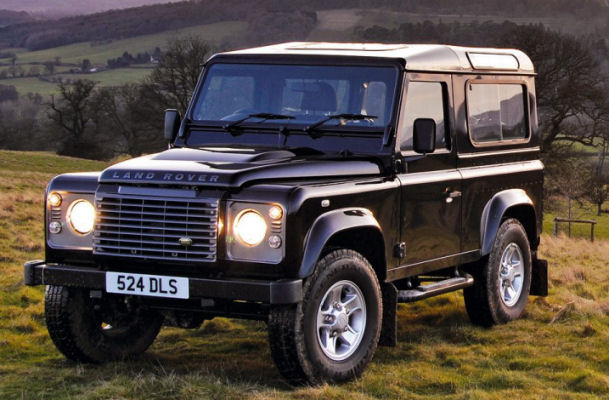
The highly civilised Land Rover Defender
The Morgan Plus 8 is a modern sports car built using traditional techniques but embracing modern technology, materials and engineering. It originally had the legendary Rover 3·5 litre engine but since the demise of Rover/MG engines have had to be sourced from other manufacturers such as BMW. Morgan produce a range of vehicles in both retro and modern styling schools featuring four and eight cylinder engines. There is currently a waiting list of three years for these masterpieces hand crafted deep in the Malvern Hills.
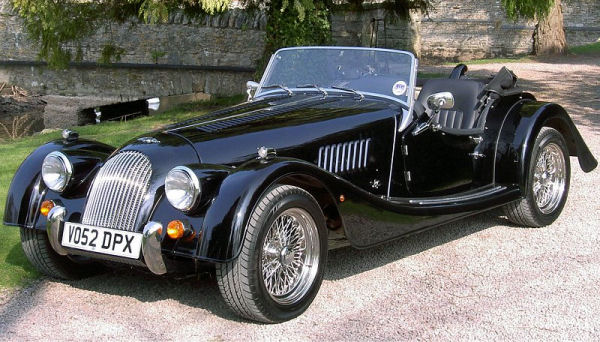
Morgan +8
The latest offering from Aston Martin's Newport Pagnell factory, famous for producing the DB5 of James Bond fame, is the ultimate Aston Martin... the One-77. This aluminium bodied supercar has a naturally aspirated 7·3 litre, 750 bhp V12 engine which propels the car in excess of 220 mph with a 0-60 time of 3·5 seconds making it the most powerful naturally aspirated car in the World (imagine the performance if it was turbocharged or even supercharged). Definitely the stuff dreams are made of!

Aston Martin One-77
I will conclude this section with a more down to earth example of superb automotive engineering... the Jaguar X-Type or as it is affectionately known... the "Baby Jag". With four and six cylinder petrol as well as diesel and four wheel drive saloon and estate versions this is one of the most affordable, economical and versatile Jaguars ever made. Born in the era when the Ford Motor Company owned Jaguar, it was rumoured that the X-Type shared its floor pan and many other components with the Ford Mondeo to keep costs down. There are many shared components such as switches, electronics, etc but regarding the floor pan, Jaguar insisted that the only body part shared across the two cars was the spare wheel well. Unfortunately, it was discontinued in 2009.

Jaguar X Type Estate
As previously mentioned, I have had an affinity with railway locomotives and trains since early childhood. I like both steam and diesel locomotives but I will deal with an iconic steam locomotive and one of my true favourites first... BR 9F 2-10-0 "Evening Star" class. I can remember seeing these enormous locomotives hauling rakes of iron ore and coal hopper wagons from Bidston Dock to Shotton Steel Works and Fiddlers Ferry Power Station in the early and mid 1960's. Unfortunately, they were retired well before their time as they were introduced just before the decision was made to phase-out steam. Hence, built in 1960, the last and most famous of all 9Fs being named "Evening Star" .

9F 2-10-0 "Black Prince"
Next I will delight the reader with the English Electric Deltic officially known as the BR Class 55. This was one of the first diesel locomotives designed for use on BR main lines. The prototype started its trials at Liverpool in 1955 and the design did not go into full scale production until 1961. Twenty examples were built and featured two English Electric Napier Deltic (hence the name) eighteen cylinder two-stroke Diesel engines with a unique cylinder configuration originally destined for motor torpedo boats. These engines were mechanically supercharged and produced 1650 hp. A few of these locomotives are still in existence on heritage railways although there are reports of at least one Deltic being brought back into main line freight duties. There was a "Baby Deltic" in the shape of the BR Class 23. This locomotive had a single, smaller, nine cylinder turbocharged Deltic engine producing 1100 hp.
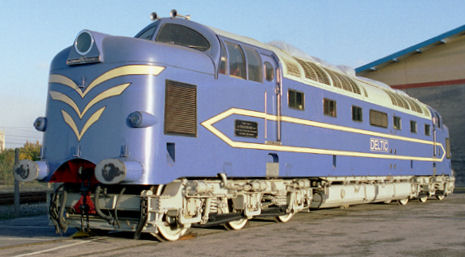
The massive English Electric Deltic Diesel locomotive complete with Art Deco "whiskers"
Another favourite Diesel powered unit was the German High-speed Diesel-Electric passenger train affectionately known as the "Flying Hamburger". This streamlined Diesel multiple unit (DMU) was Germany's first high-speed passenger train entering service in 1933 and was powered by a twelve cylinder Maybach diesel generating set in each unit. The top speed was 99 mph and it could carry 98 passengers in comfort. There is only one example of these units preserved and still in use on heritage excursions. When I was a child our Trix Twin model railway had a similar train known as the "Diesel Flyer" (alias "Buzz-Buzz") which was heavily influenced by the Flying Hamburger. Looking at the two today there does not appear to be a great deal of similarity between the two but one has to realise the date the model was produced (late 1040's) and take into consideration the fact that model railways of the time did not possess the same level of authenticity and attention to detail that we enjoy today!
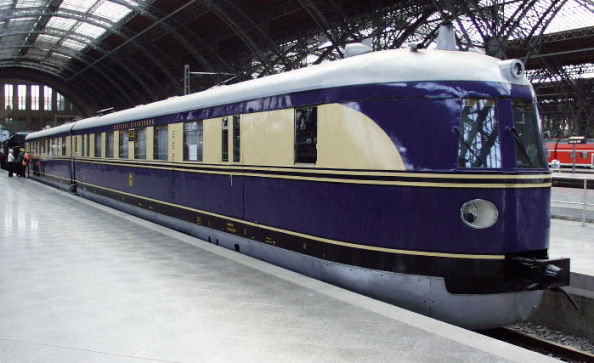
The German "Flying Hamburger" DMU

The Trix Twin 00 scale "Diesel Flier"
The world's largest steam locomotive is generally recognised as being the American "Big Boy" 4-8-8-4 articulated mixed traffic locomotive. Twenty five of these monsters were built for the Union Pacific Railway between 1941 and 1944 to haul coal, freight and passenger trains through the mountainous regions of Wyoming and Utah over the Wasatch range of mountains. There are eight preserved examples still in existence but only one is able to be steamed. With a combined weight (engine and tender) of 155 tons and over 132 ft in length (including tender) they were capable of 80 mph. And all this on a standard gauge of four foot eight and a half inches!
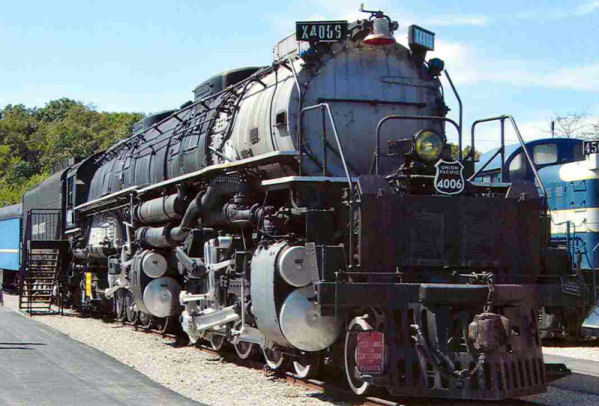
Big Boy 4006 preserved at the Transport Museum in St Louis, Missouri
Articulated locomotives are not just found in the USA. Beyer Garrett of Manchester produced may articulated designs and exported them all over the planet as far as Australia and China. Ranging in size from narrow gauge midgets to examples such as the 4-8-2-2-8-4 belonging to South African Railways. Beyer did not just build locomotives such as these. They also were responsible for building conventional locos from 0-4-0 upwards.

A 4-8-2-2-8-4 Beyer Garrett belonging to South African Railways
From large locomotives we now down-size to another articulated locomotive that is also reasonably new... the 1992 built "David Lloyd-George". This narrow gauge (23·5 ins) 0-4-4-0 Double-Fairley was built by the Ffestiniog Railway at its Boston Lodge works. Construction was made possible by a grant from the INCA project and is based on an 1880's design and in fact utilises bogies from both "Earl of Merioneth" locomotives. The locomotive has proved to be extremely reliable but as it is fuelled by oil and not coal is increasingly expensive to run. Bearing this in mind it is currently used as a stand-by locomotive.
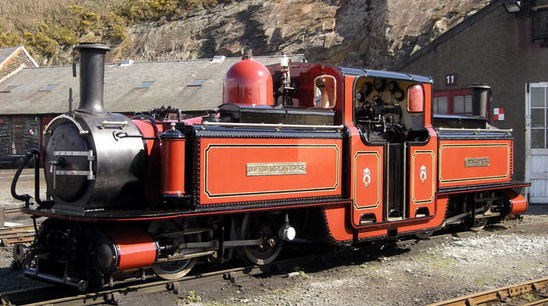
Ffestiniog Railway built Double Fairley "David Lloyd George"
Another small (ish) locomotive is the ever popular GWR 57XX 0-6-0 pannier tank locomotive. Dating from around 1931 these locomotives graced the tracks of the Great Western Railway right up until the end of steam and quite a few are still giving sterling service on many heritage railways. They were equally at home pulling a mixture of goods wagons, a rake of "coffee and cream" passenger coaches or even an autocoach... a passenger carriage where the engine is controlled by a driver from inside the carriage. Thirteen examples even found their way onto the London Transport system where they were used as shunters and general duties locomotives but not for passenger traffic. There cannot be a GWR themed model railway that does not contain at least one of what can only be one of the most popular 0-6-0 tank engines ever made.

The jack of all trades GWR 57XX 0-6-0 pannier tank engine
Designed by R A Riddles the BR Class 4 MT 2-6-4 tank locomotives were primarily used on suburban passenger trains from 1951 onwards. Based on an original design by Fowler - the Fairburn 2-6-4 tank locomotive and drawing some design features from the GWR Prairie 2-6-2 tank locomotives 155 examples were built between 1951 and 1956. Fifteen remain preserved on heritage railways. The BR Class 4 2-6-0 MT was based on this design only having a tender instead of a coal hopper behind the cab and side tanks.
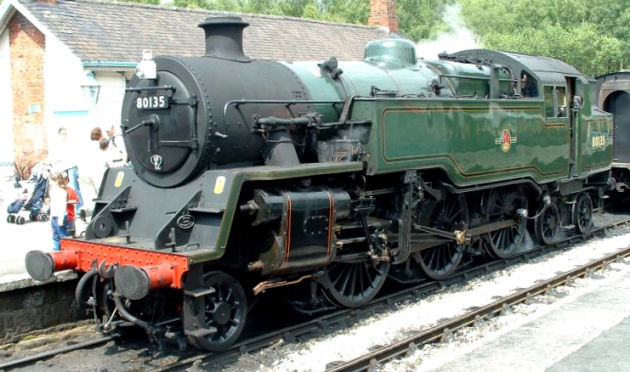
Class 4 2-6-4 tank locomotive...
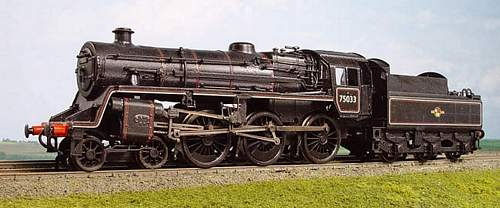
... and the 2-6-0 tender version (Yes - this is a Bachmann 00 scale model)
I make no apologies for the following... a portrait of British Pacifics in various guises built for the various railway regions. If the next locomotive bears a resemblance to the 9F featured at the beginning of this section it is not surprising as they both had the same designer... none other than Robert Riddles. Fifty five Britannia or BR Standard Class 7 locomotives were built between 1951 and 1954 at the Crewe Works and turned out to be the last Pacifics made for British Railways. Unfortunately only two were saved from the scrap yard. They utilised many of what can be described as the best design features from various locomotives such as the rear bogies from the Merchant Navy Class, single chimneys to accommodate redesigned blast pipes and Walschaerts valve gear. They were at home on goods or passenger traffic but however they were used they always look like a beautifully well proportioned design.
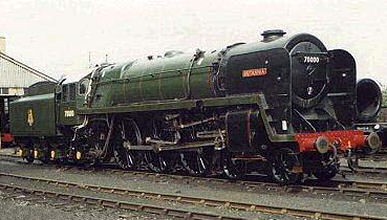
Britannia Class 7 4-6-2 Pacific
My next example is a relatively new locomotive... The A1 class 4-6-2 "Tornado". Originally, 49 Peppercorn A1 Pacifics were built up to 1949 to serve on the East Coast Main Line but none have been preserved. Consequently, there was a gap in the preserved locomotive stock in this country, so it was decided to build a new one from scratch. The A1 Locomotive Trust was formed in 1990 and construction commenced on what was to become "Tornado" named after the jet fighter. The build was financed from donations and loans and the locomotive was completed in 2008 at Darlington. "Tornado" regularly pulls passenger excursions earning money to repay the loans raised for its construction. Theoretically capable of 100 miles per hour (160 km/h), the locomotive may in the future gain permission to run at 90 miles per hour (140 km/h), making her currently the fastest steam locomotive on the British main line.
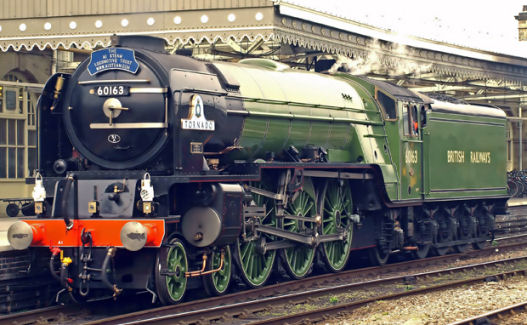
A1 4-6-2 Pacific "Tornado"
No collection of railway locomotives would be complete without mentioning LNER A3 Pacific 4472 (originally numbered 1472) otherwise known as the "Flying Scotsman". This locomotive was built in 1923 at Doncaster to a Gresley design and was originally classified as an A1 Pacific later to be rebuilt in 1947 as an A3 Pacific. On the 30th November 1934 it became the first steam locomotive to officially break the 100 mph speed record. In 1963 it was retire from BR and subsequently bought by Alan Pegler for preservation and an additional tender fitted but later bought by a consortium that included Pete Waterman. Over the years the locomotive has travelled to the USA and was subsequently fitted with equipment such as a cow catcher, different couplings, a bell, etc in order to run on American rails. The loco has also visited Australia where it broke yet another record... this time for travelling 442 miles non-stop... the longest unbroken journey undertaken by a steam locomotive.
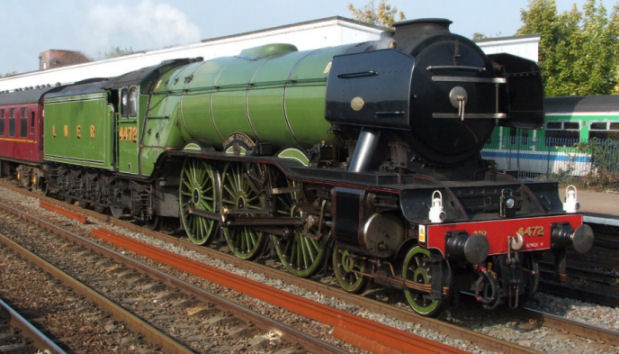
The famous "Flying Scotsman" 4472
Our collection of Pacifics continues with the Southern Region's "air smoothed" Bulleid Pacifics built between 1941 and 1949. These distinctive locos incorporate a number of revolutionary design features including welded frames, chain driven valve gear and stylish wheels. The air smoothed casing was not streamlined but was to direct exhaust steam and smoke away from the cab and to aid cleaning. The thirty engines of the class were rebuilt in the 1950's when the casings were removed for ease of maintenance and lubrication and lasted right up to the end of steam in 1967.

The Merchant Navy Class originally featured an air smoothed casing...

... which was removed from all locos when rebuilt in 1957
Following on from the Merchant Navy's air smoothed casing twenty examples of the LMS Coronation Scot had a fully streamlined casing that was later removed as the added weight was did not outweigh the small advantage in performance. Later examples were built without the streamlined casings. The class were the most powerful steam locomotives ever made to run on British rails and in 1937, prior to introduction an example achieved 114 mph beating the speed record held by the LNER. Duchess of Hamilton was re-streamlined in 2009 as there were no examples of the class featuring streamlining.
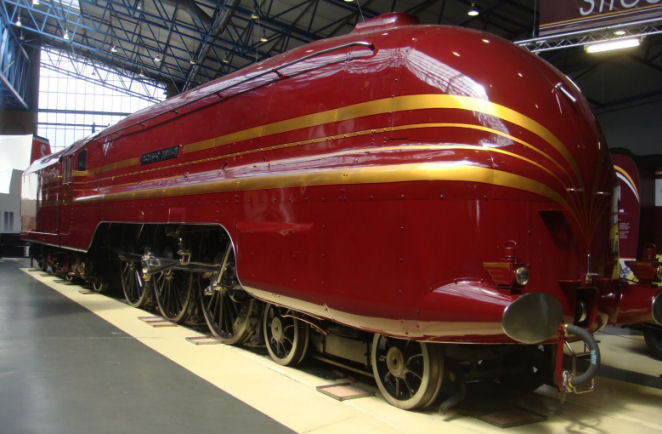
The first twenty examples of the Coronation class were streamlined. This is 6229 Duchess of Hamilton...
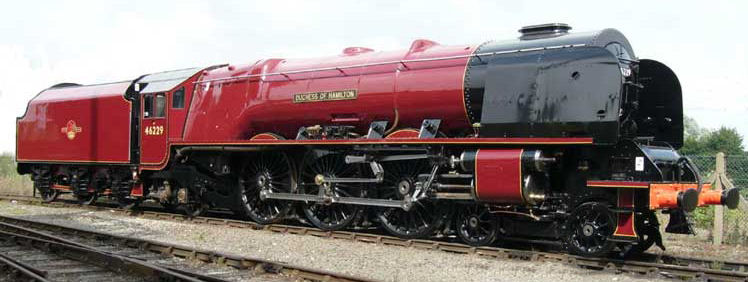
... and this is 6229 Duchess of Hamilton before being re-streamlined
I complete this section with one of the most distinctive Pacifics ever made... the streamlined A4 Pacific built for the LNER of which number 4468 Mallard is the most famous example. The class was designed by Sir Nigel Gresley and introduced in 1935. The aerodynamic casing, influenced by the Flying Hamburger featured previously, was perfected in a wind tunnel but the valances covering the wheels were removed during the Second World War for ease of maintenance and lubrication. Mallard was built in 1938 and on the 3rd July of that year attained 126 mph breaking the World Speed Record for steam trains. A record that it still holds today.
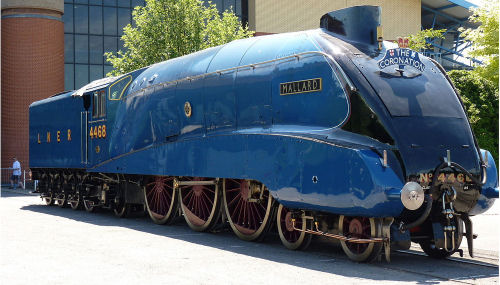
The fastest steam locomotive in the world... 4468 Mallard
As a child my parents used to hire canal cruisers for our summer holidays. Whilst cruising the canals at this time (early/mid-1960's) there was a type of canal cruiser that I always looked forward to seeing. They were the mahogany canal cruisers built in Chester by J H Taylor and Company. They were hand-built and varnished to the highest standard, were a sight to behold and no two were the same. Over the years the number of these beautiful boats has diminished but there are still a few around.
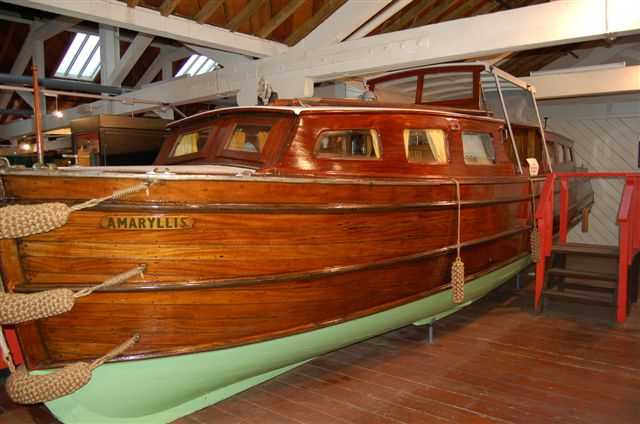
J H Taylor built centre cockpit "Amaryllis" is on display at the National Waterways Museum - Ellesmere Port
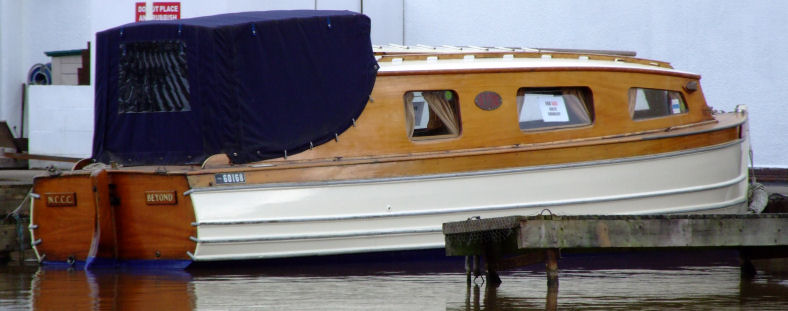
The aft cockpit "Beyond" recently on brokerage at Venetian Marine - Cholmondeston
Narrowboats hold a special place in my heart. "Total Eclipse" (shown below) is a Hancock and Lane Norseman dating from 1981 when it was the Earls Court Boat Show demonstrator for the builders. It was once owned by myself and at forty feet long it is not as long as many new narrowboats but that suited us just fine as there are not many places on our home waterway... the Bridgewater Canal where we could not turn around without having to resort to the winding hole.
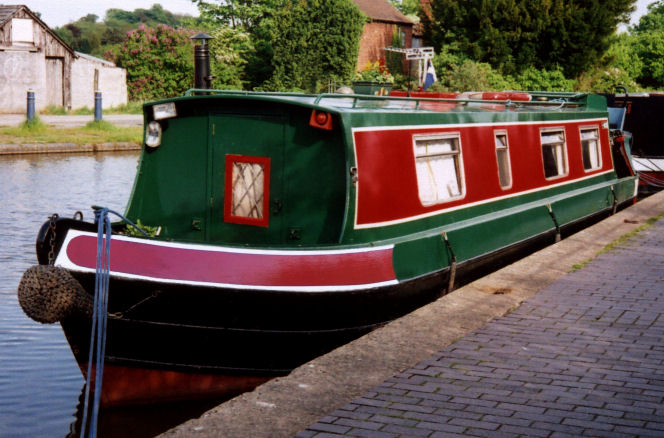
"Total Eclipse"... a Hancock and Lane Norseman S 40 narrowboat
Having owned "Total Eclipse" for many years she was replaced by a more modern Liverpool Bpat Company craft christened "Squirrel" which is five feet longer and offers many facilities such as central heating and mains electricity that we could previously only dream of.
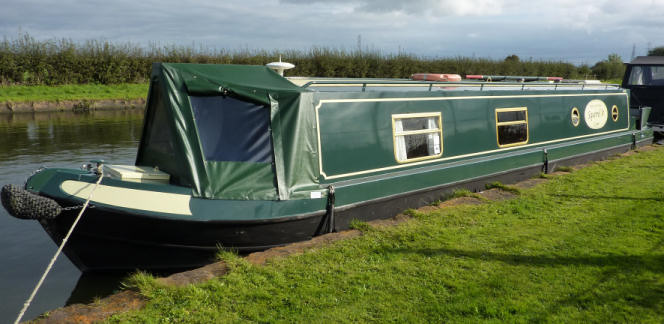
Our current narrowboat... "Squirrel" built by Liverpool Boat Company
A type of boat that is renowned throughout the World as a design classic is the Riva Aquarama speed boat. These varnished mahogany masterpieces are hand built on the banks of Lago d’Iseo in northern Italy and were built between 1961 and 1996. Its evocative name perhaps assured its mythical status, and is derived in part from the widescreen Cinerama movie format, popular in the early 1960s, which is echoed by the shape of the boat’s wide windshield. Only available with twin engines (usually American V8s of various sizes) the top speed of the Aquarama can exceed 40 knots. Although no longer in production the Riva Aquariva is a worthy successor but modern examples are fitted with Diesel engines and are slower than their predecessors.
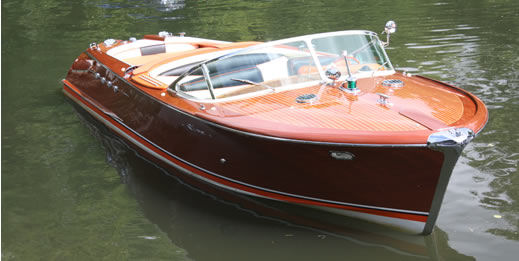
The finish and beautiful lines of the Riva Aquarama have to be seen to be believed
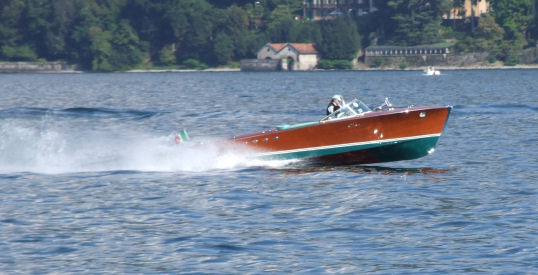
A Riva Aquarama at speed on Lake Como
Of equal standing to the Aquarama is the British built Fairey speedboats. Built at Southampton on the River Hamble these off-shore and river cruisers were in production from 1960 to 1975. Originally the hulls were made from a unique timber laminate later models were constructed in GRP. Various models were produced in the shape of the Huntress, Huntsman, Fantome, Swordsman, Super Swordsman, Spearfish and Spear models in lengths varying from 28ft to 33ft. Power was usually in the form of twin Perkins Turbo Diesels. The spirit of these beautifully proportioned boats lives on in the shape of the Swordsman Marine boats based on Fairey designs.
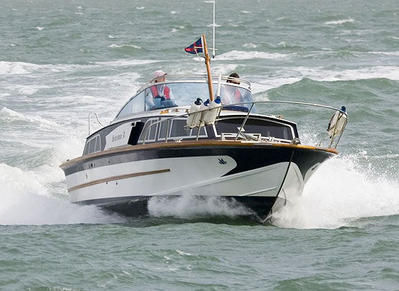
A Fairey Huntsman off Cowes, Isle of Wight
Staying in the same part of the World, the name Vosper is synonymous with fast motor torpedo boats, naval vessels, hovercraft and off-shore cruisers. Their Motor Torpedo Boats have been copied by many modellers over the years but there is one craft that they built that has been largely ignored... the triple engined (five really) express turbine yacht. This craft shares the hull of its military forbears but instead of three piston engines it possesses three Proteus gas turbine engines coupled to surface drives (water jets) plus two conventional diesel engines for low speed cruising and manoeuvring. The combined engine output is 13520 hp allowing a maximum speed of 60 knots. It was originally built in 1959 for the Greek ship owner Stavros Niachos who christened it "Mercury" but today has the name "Brave Challenger". As a child I had a Victory model of this boat. I modified by adding a more powerful motor, altered the propeller shaft gearing and fitted davits to the stern complete with a Corgi model of a Dolphin 23 cabin cruiser. A heavily modified example of the Victory model converted into a hydrofoil featured in the original "Thunderbird" television series of 1965.
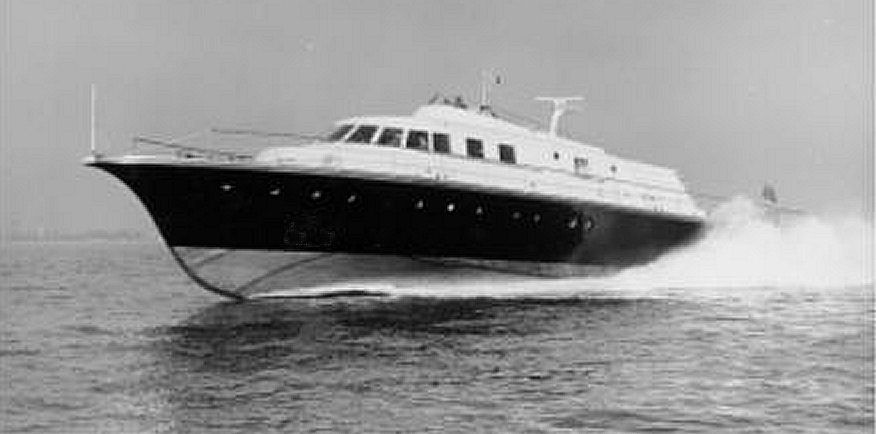
The photograph of the real thing that I had glued to the box of my model "Mercury"
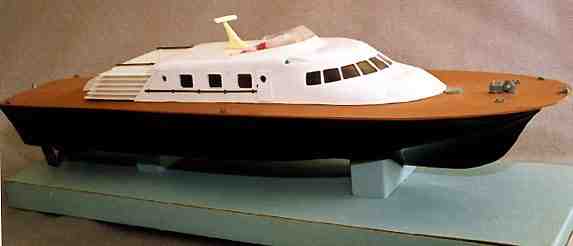
The Victory model of Vosper's Express Turbine Yacht...
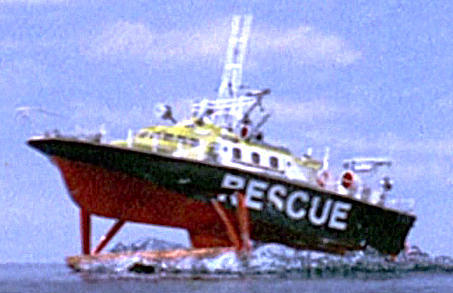
...and converted to a hydrofoil as featured in the TV series "Thunderbirds"
(Screenshot - Century 21 Productions)
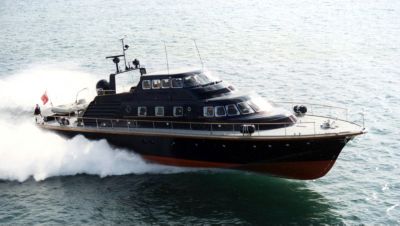
"Brave Challenger" at speed
(Photograph - PistonHeads)
The Mersey Ferry boats have been part of my life for as long as I can remember and my favourite of them all is the "Royal Iris". This diesel-electric craft was built by Denny’s Shipbuilders of Dumbarton on the River Clyde in 1950for Wallasey Corporation at a cost of £400,000 and entered the Mersey for the first time in 1951... a few months before I was born. The design was revolutionary and frequently dances were held whilst cruising out as far as the Mersey Bar. There was also a fish and chip bar on board and the boat was nick-named "The Floating Fish and Chip Shop". When the “Q.E.2” first came to the Mersey in 1990, the “Royal Iris” was used as a tender, ferrying dignitaries and passengers alike to and from the giant ocean liner. Sadly, she was retired soon afterwards and put up for sale. When the "Iris" was eventually sold she was moved to Stanley Dock in Liverpool to be used as a conference centre and night club. The nightclub and conference centre plans didn’t work out and on the 23rd August 1993 she was towed to Cardiff, South Wales for a similar venture, which also collapsed. On the day that she was towed to her new home, she left Stanley Dock and the tug towed her past the Princess Landing Stage for the last time. The fog bell tolled mournfully and the ferryboat on duty sounded her horn as a farewell gesture. After passing the Pier Head the “Royal Iris” was towed across the river to the Wallasey side and passed the Seacombe landing stage before heading downstream and out of the Mersey forever.
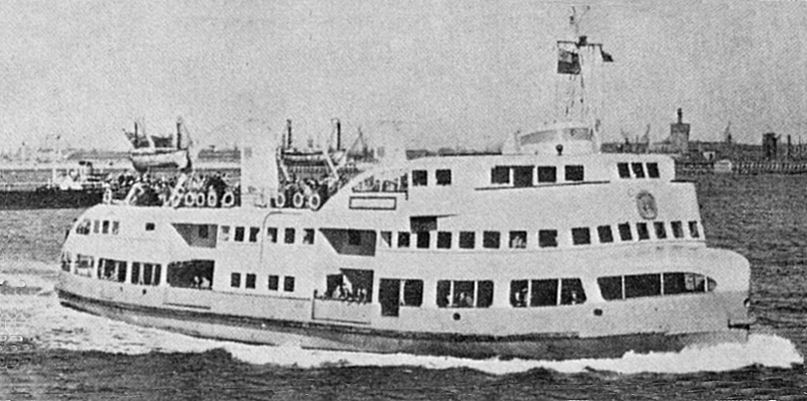
The Mersey Ferry "Royal Iris" seen here in 1951 when newly launched
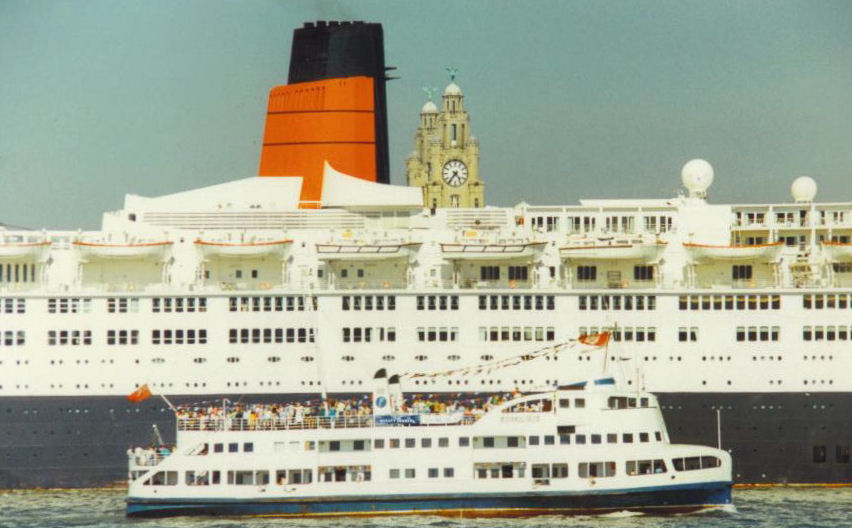
The "Royal Iris" dwarfed by the "QE2" in 1990 when she was used as a tender
At the time of writing (April 2019) she is lying in tidal moorings on the mud banks just downstream from the Thames Tidal Barrier awaiting her fate. It would be a fitting tribute to her if she was brought back to the Mersey and installed in Liverpool’s Maritime Museum dry-dock, next to the pilot boat as an exhibit containing the history of the ferries. There are doubts as to whether or not she would pass through the Canning Half-Tide Dock’s entrance lock but, even if she was too wide in the beam for the lock, there are other nearby locations such as Wallasey Pool (Wallasey and Birkenhead Docks) that could offer her a suitable home. Unfortunately, she needs a complete new bottom and neither of her engines work. It would require considerable funding to purchase her from her present owners and either make her seaworthy to bring her back to the Mersey and return her to her former glory, which makes either option an uneconomic proposition. It is doubtful if a new owner can be found and she will, in all probability, end up in the breakers’ yard in the not too distant future.
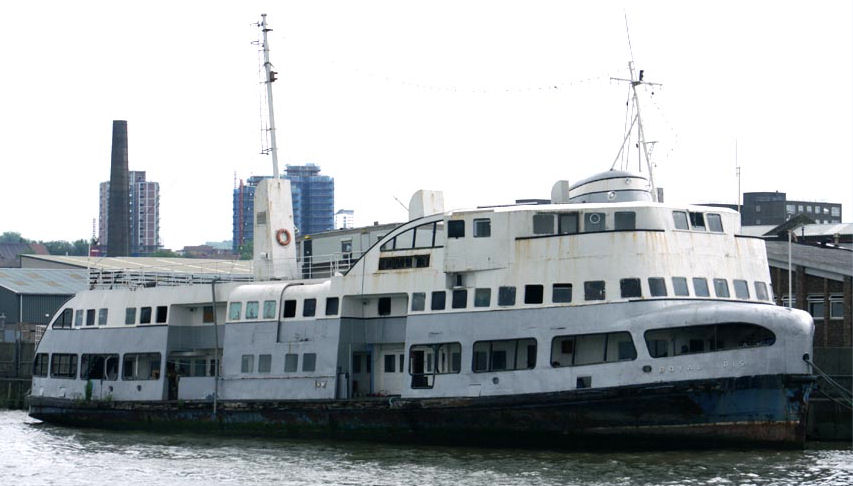
The "Royal Iris" awaiting her fait on the River Thames
When the "Royal Iris" entered the River Mersey for the first time its appearance caused a stir with the local ship enthusiasts. I wonder what they would have thought of the MV "Kalakala" (previously named "Peralta")? This was the world's first streamlined ship and also caused controversy when, in 1926, it went into service as a ferry boat on Puget Sound, Seattle in the USA. It also boasted the honour of being the first ship to be licensed by the FCC to have an on-board radar system in 1946. As well as being futuristic in design like the "Royal Iris" it shared the same fate of being abandoned and was broken up in 2015.
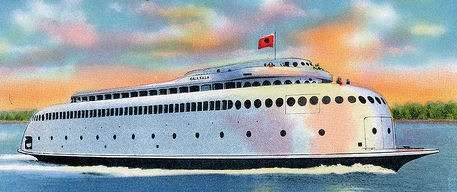
The MV "Kalakala" on Puget Sound

The derelict MV "Kalakala" before being broken up
For my next example we up-scale to a ship. well, a small one anyway... Her Majesty's Royal Yacht "Britannia". She was built by John Brown's shipyard in Clydebank and launched on 16th April, 1953. Powered by twin 6000 hp steam turbines she travelled one million miles all over the world. "Britannia" was to became one of the most recognised and famous ships in the world until decommissioned in 1997 after serving the Royal Family for over 44 years. She is now permanently moored at Leith in Edinburgh and is a visitor attraction and function suite. She is part of the National Historic Fleet, Core Collection and is looked after by the Royal Yacht Britannia Trust.
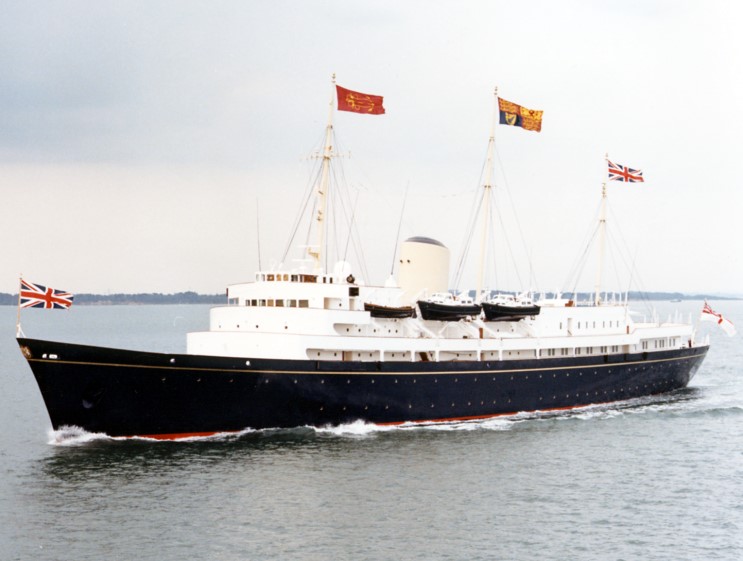
Royal Yacht Britannia - a floating palace (literally)
In my mind one of the most beautiful ships ever built was none other than Cunard's QE2. She was launched from John Brown Shipbuilders on the Clyde 20th September 1967 and had her maiden voyage on 2nd May 1969. She was originally powered by steam turbines but on the 1986/87 refit converted to diesel power. She was requisitioned for use as a troop ship during the 1982 Falklands War and was fitted with a helicopter landing pad but returned to her cross-Atlantic duties afterwards. She was retired in 2008 and has had an uncertain future since then with various plans proposed converting her into a floating hotel and also a return to transatlantic cruising. At one point it was even rumoured that she would return to Liverpool to be used as a floating hotel. At present she is berthed in Port Mina Rashid in Dubai and has been refitted as a floating hotel.

Cunard's QE2 berthed at Liverpool's iconic Pier Head for the last time in 2008
My first aerial favourite is the De Havilland Dragon Rapide. This is a short-haul passenger biplane designed in 1933. It first took to the air the following year and quickly found favour with the armed forces and civilian airlines as well. In 1939 many Dragon Rapides were re-engined with the more powerful Gypsy Queen engines which made them into Dominies. Production ceased at the end of World War Two and the aircraft was replaced by the de Havilland Dove. Many Dragon Rapide/Dominies are still in use to this day thanks no doubt to the durable nature of the simple design, plywood frame and reliable engines.

de Havilland Dragon Rapide/Dominie
The de Havilland Tiger Moth is a bi-plane that first flew in 1931 and production ceased in 1944. The aircraft used the same engine as the de Havilland Dominie (above) but was a much smaller and simpler design. Again a plywood frame covered with fabric ensured a light air frame that was rigid and easy to repair. Primary use was as an aerobatic/training aircraft and thousands of pilots had their first flights in a Tiger Moth. Many are still in use today.
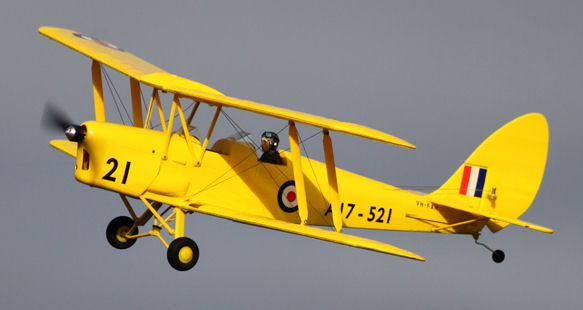
de Havilland Tiger Moth
Next is a venerable wartime favourite... the Spitfire. A lot has been written about this World War Two hero but I think that it is one of the most beautiful aircraft ever built. It was based on the Supermarine S6 Schneider Trophy Winner designed by R J Mitchell and first flew in 1936. It evolved into many variants to be used by air forces all over the world. Its good looks and handling were enhanced by the Rolls Royce Merlin engine that was also used in the Mosquito and Lancaster plus others too numerous to mention. Alternative uses for the Merlin engine were in tanks, motor torpedo boats, air/sea rescue boats and even in a couple of cars! Later versions of the Spitfire used the more powerful Rolls Royce Griffon engine which gave it a significantly greater performance and top speed. The Spitfire is probably the fastest propeller driven aircraft of all time achieving a speed of 690 mph in 1952 whilst on a high altitude record flight. The height recorded was 51550 ft. Production of the aircraft ceased in 1948.
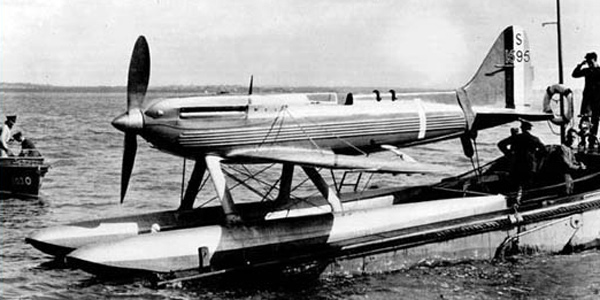
The 1929 Supermarine S6 Schneider Trophy Winner was the prototype for...

... the Spitfire - one of the most beautiful aircraft ever designed
The 1948 Canadian de Havilland Beaver is a jack of all trades. In addition to being an airborne taxi it has been used for carrying cargo, crop dusting aerial reconnaissance and other general duties. A robust and easy to fly aircraft it has found favour all over the Americas and even as far as New Zealand. It is easily fitted with skids, skis or pontoons in addition to its wheels making it extremely versatile and found in locations varying from tropical to Arctic.

The versatile Canadian de Havilland Beaver
From the sublime to the ridiculous... not that size is ridiculous but the Avro Vulcan is gigantic. Designed from the outset to carry nuclear weapons during the Cold War it first flew in 1952 and subsequently 135 examples were built. As well as nuclear bombs the aircraft was modified to launch Blue Steel nuclear missiles until the Polaris carrying submarines were introduced into service. Throughout its career the Vulcan also carried conventional bombs and the only combat missions that it was involved in was during the 1982 Falklands Conflict. At the time, these missions held the record for the world's longest-distance raids necessitating the aircraft flying to Ascension Island in the Atlantic Ocean which they used as a base before flying the 3889 miles to the Falklands. They were modified to accommodate a marine reconnaissance role and even as an air to air refuelling tanker. The Vulcan was also the test bed for the Rolls Royce Olympus engines to be installed in Concorde. The Vulcan retired from active service in 1984 but there is still one example flying - XH 558 operated by the Vulcan to the Sky Trust. 2013 may be the last year this aircraft will fly due to lack of finances for wing spar upgrades and the lack of spare engines. However there are a further two examples in taxiable condition based in aircraft museums in the UK.
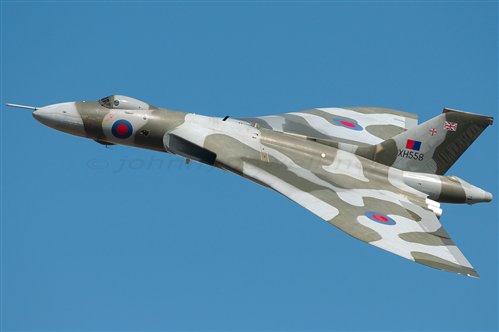
The Avro Vulcan.. a Cold War Hero
As previously mentioned - the Avro Vulcan was the test bed for what I consider to be the most beautiful aircraft of all time... Concorde. But there are similarities in design. Both are delta winged, have a similar silhouette and both have four Rolls Royce Olympus engines. However, their rolls are completely different. Whilst the Vulcan was a military aircraft Concorde was designed from the outset to carry 120 first class passengers across the Atlantic at a previously undreamt of speed. Concorde was to regularly achieve this in less than three and a half hours but currently holds the record for the transatlantic crossing from Heathrow to JFK New York at two hours fifty three minutes. On its last USA flight when it was being delivered from New York to the Museum of Flight in Seattle it set another record for this route at three hours fifty five minutes. It was not the first supersonic airliner. That distinction goes to the highly unreliable Tupelov TU 144 which took to the skies two months before Concorde in January 1969. The two aircraft look virtually identical in design (except for the small forward wings or canards on the Tupelov) but that is where the similarities end. There was a third aircraft of this type in development... the Boeing 2707, but the project was cancelled before either of the two prototypes under construction were completed. Concorde entered service in 1976 and was capable of flying retired in 2003 due to the high maintenance costs. Of the twenty examples built many are on display in museums world-wide. It was well ahead of its time and even though there have been plans to return this beautiful aircraft to service I doubt if this will ever happen and there are currently no examples flying.
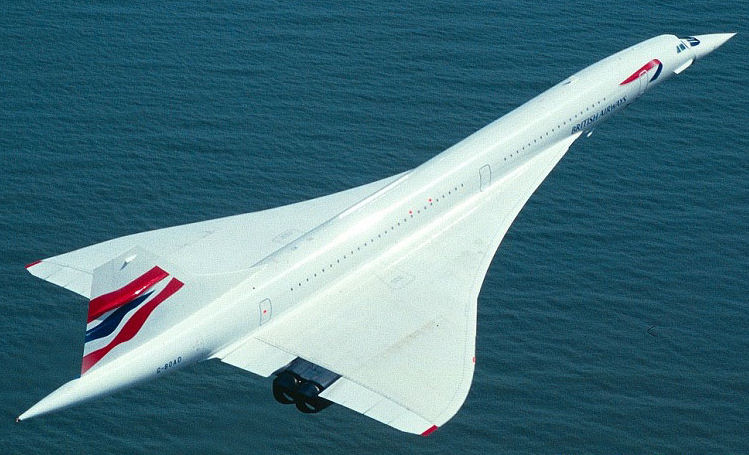
The most beautiful aircraft of all time... Concorde
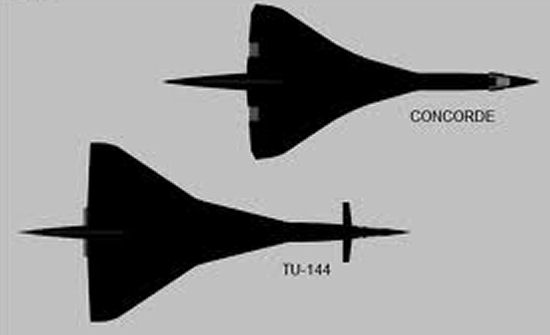
Differences in silhouette between Concorde and the Tupelov TU-144
In complete contrast to Concorde the Beechcraft Bonanza is an affordable single engined propeller driven aircraft that went into production in 1947 and is still being built today. More than 17000 examples have been built and it has the longest production life of any aircraft ever made. With its distinctive "V" shaped tail elevator/rudder known as a "ruddervator" this has to be one of the most distinctive small aircraft in the world.
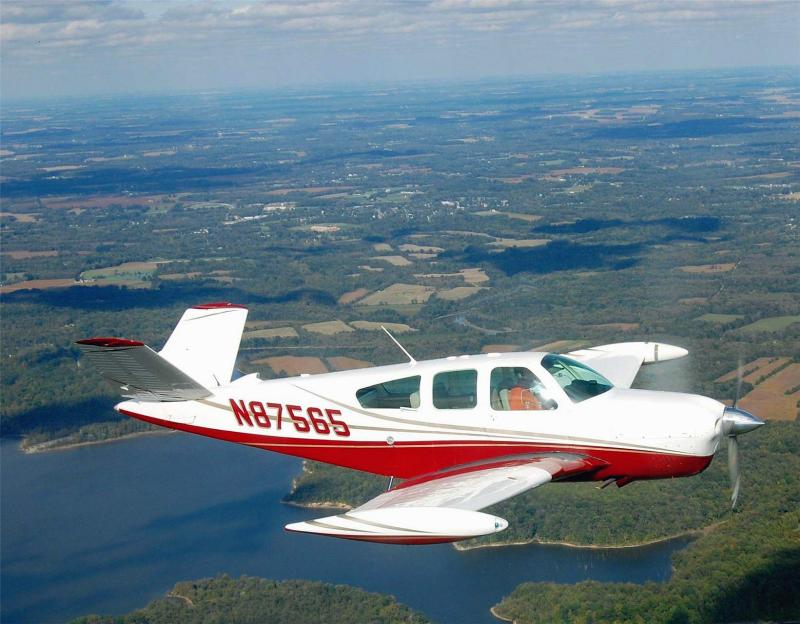
The V-Tailed Beechcraft Bonanza
One of the most venerable aircraft of all time has to be the Douglas DC3 Dakota. It first flew in 1935 and was initially built as a passenger aircraft, it has seen service with various military departments as a transport aircraft designated the C47 Skytrain. It was also constructed under licence in Russia and Japan. Of rugged construction it is able to take off and land on grass or dirt runways and other locations not normally paved. 607 examples in various guises with a variety of engines were built from 1935 to 1950 and it can still be found in regular use to this day, especially in developing countries or where there is no paved runway.
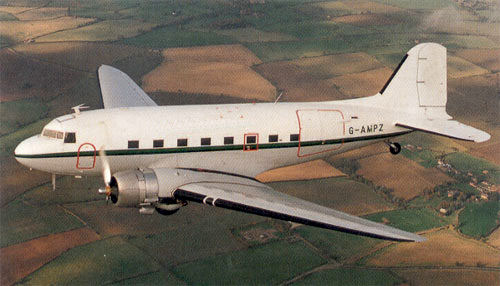
Versatile classic... the Douglas Dakota DC3
Russia is not known for innovation but the Mig 25 Foxbat is one of the most significant military aircraft to come out of the Cold War period. It first flew in 1964 and entered service in 1970. Its twin Tumanski give it a theoretical top speed in excess of Mach 3 and even as high as Mach 3.2 but this may result in damage due to overheating. In all 29 records were claimed, of which seven were all-time world records for time to height, altitudes of 20,000 m and higher, and speed. Several of these records still stand today. The Clint Eastwood film "Firefox" starred a fictitious aircraft known as a Mig 27 - Firefox. This aircraft was based on the Mig 25 and many of its technical features are accurate... except for the thought controlled weapons system!
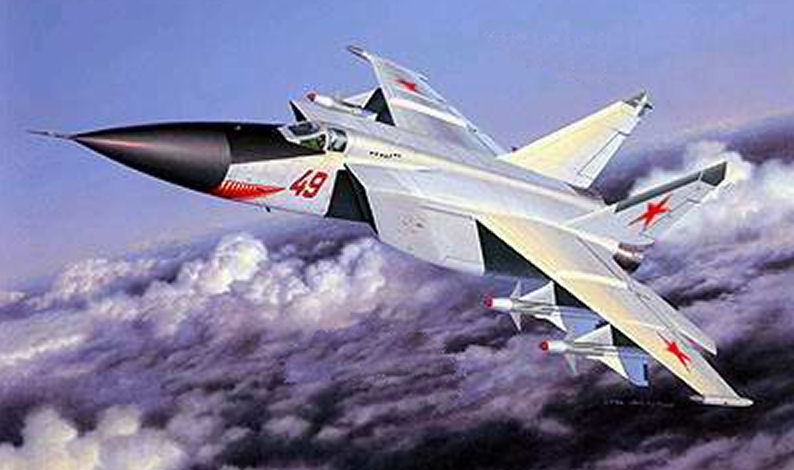
The record breaking Mig 25 Foxbat...
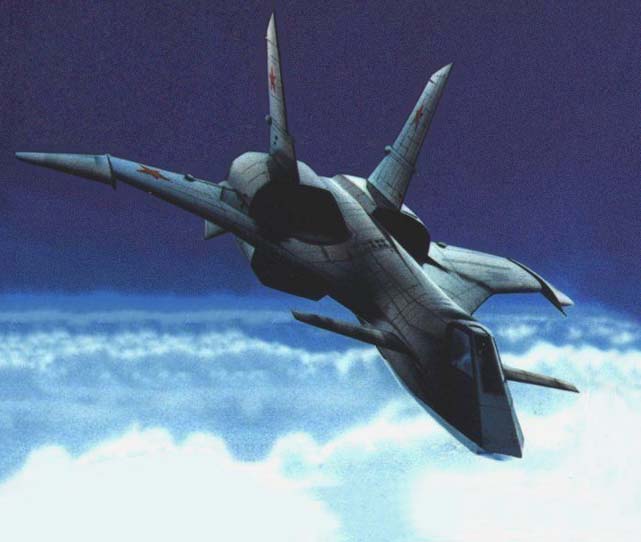
... and the fictitious Mig 27 Firefox based on the Mig 25
The last aircraft listed has to be one of the most revolutionary designs since the Wright Brothers. It is none other than the Hawker Harrier vertical take off and landing aircraft euphemistically called the "jump jet". To achieve this feat thrust from the Pegasus engine is directed into steerable nozzles mounted along the fuselage to lift the aircraft to height when the nozzles are pointed backwards to give forward thrust. This is known as"vectored" thrust. It is not the fastest of aircraft... not even able to achieve mach 1 but, as previously mentioned, its expertise lies in other areas. The Harrier is a prime example of British technology again leading the world and succeeded where others failed (as with Concorde).

The Hawker Harrier - a revolutionary design
The next section deals with other forms of transport that do not fall into the previous categories. We start with Christopher Cockrell's masterpiece... the Hovercraft. This revolutionary means of transport first operated in 1959 and is neither aircraft, boat or car but it does cross the boundaries that other means of transport are bound by. Basically it is a vehicle that sits on a cushion of air to remove all contact and hence friction with whatever it is being "flown" across be it land, water, ice, snow, sand or mud. Forward motion is provided by thrust from either a propeller (s) or jet engine (s). The scale of hovercraft produced ranges from small single seater machines up to monsters capable of crossing the English Channel loaded with in excess of 250 passengers and thirty cars (SR. N4). They offered a regular passenger and car ferry service across the English Channel but the service was often hampered by rough weather. As a child I remember seeing trials of a hovercraft at Harrison Drive in Wallasey where there was a short-lived ferry service across the River Dee estuary to Rhyl in North Wales. Hovercraft are widely used by emergency services, military and transport companies all over the world.
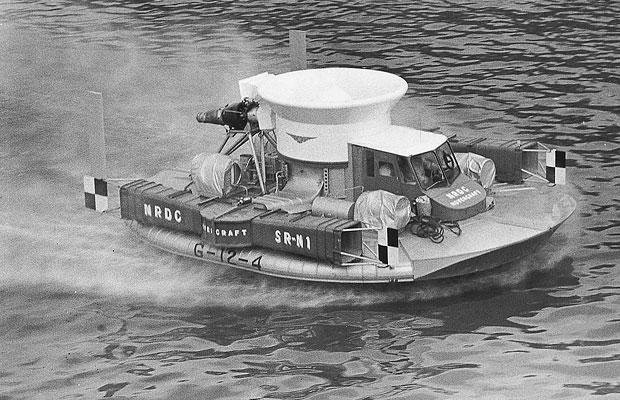
The SRN1 undergoing trials with a jet engine mounted behind the air intake
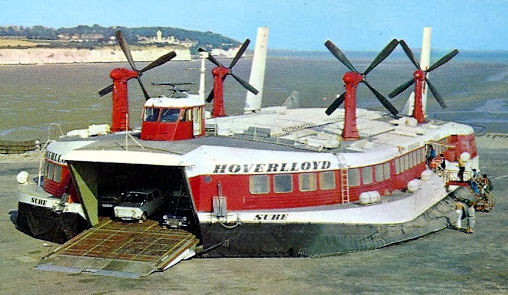
The SRN4 car/passenger ferry
Related to the hovercraft in theory is the ekranoplan or to give it the correct title the Ground Effect Machine. Instead of generating a cushion of air on which to sit on the ekranoplan relies on short stubby wings to generate sufficient lift for the vehicle to rise above the surface of a stretch of water and then skim across it. Often used mainly by the Russian military on the Caspian Sea they were referred to as "Caspian Sea Monsters". As well as transporting troops and military vehicles they were capable of launching missiles. There is currently an upsurge in interest in this virtually unknown means of transport for leisure use in the USA.
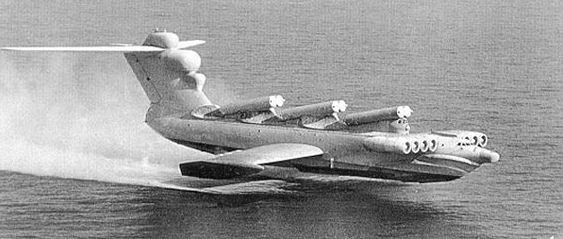
Eight jet engines propel this Russian ekranoplan across water. Note the missile and radar pods.

The sheer size can be judged by this illustration
The next means of transport is also related to the hovercraft and the ekranoplan as well. It is the hydrofoil. More of a boat that the previous two entries but like the ekranoplan as it gathers speed it starts to lift out of the water not by stubby wings but by foils (underwater wings) mounted on the hull beneath the water line. These wings allow the hydrofoil to fly on water rather than above it. Although this design is mainly used for passenger transport in calmer waters it is also used for high-speed naval and military applications.
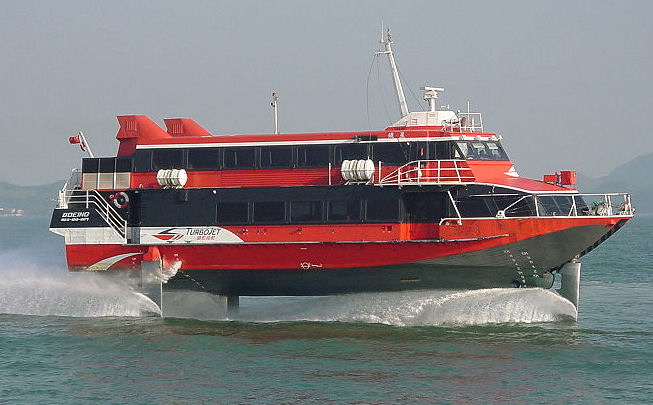
A Boeing Jetfoil passenger hydrofoil
The Alvis Stalwart is a true amphibian. Basically a nine ton, six wheel, six wheel drive road vehicle it can float and is fitted with a vectored thrust propulsion unit driven by the same eight cylinder Rolls Royce 6·5 litre straight eight petrol engine that drives the road wheels. The vectored thrust unit also steered the vehicle when in water. First built in 1959 it was used mainly by the British Army from 1966. The Stalwart or "Stolly" as it was known was capable of carrying a five ton load or towing up to ten tons. On land the top speed is 40 mph and in water it was capable of travelling at six knots. Fuel consumption is stated as being about 4·5 miles per gallon. It was also used for exploration purposes in areas such as the Arctic.
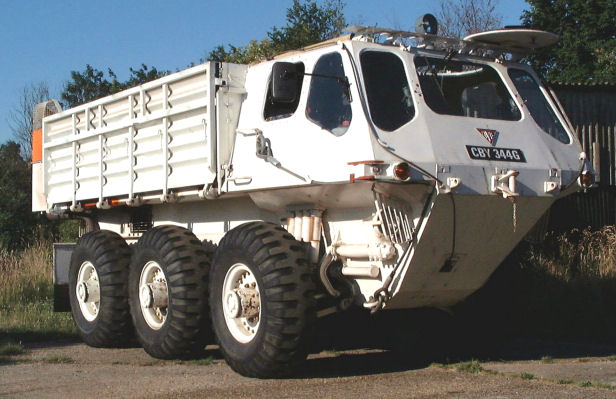
The Alvis Stalwart amphibious road vehicle
Our next means of transport is the Harley Davidson motorcycle. These classic bikes have been produced in the United States since 1903 and have a world-wide reputation for being one of the best motorcycles in the world. Designed for the wide, relatively straight American highways they have a reputation for not liking to go around corners (just like the AC Cobra sports car) but I am sure that there are plenty of owners who would dispute this fact. The twin cylinder engines produce a very distinctive sound that has been imitated by many manufacturers over the years but none have been able to mimic the sound exactly.
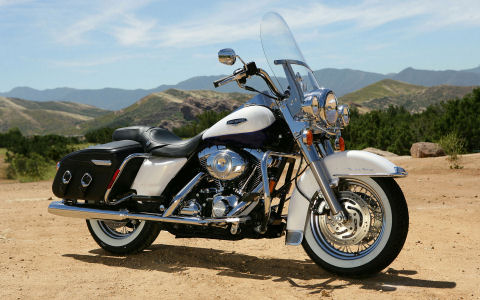
Harley Davidson Road King
We stay on the roads of the USA for our next classic. The Peterbilt along with Kenworth are renowned for being prime movers in American road transportation. They started construction in 1939 and have been produced ever since, keeping more or less to the same design bar a few modifications and design tweaks. Powered by a six cylinder PACCAR Diesel engine that has not changed significantly since their introduction the reliability of these kings of the road are legendary. Often heavily customised with creative paint jobs, these trucks look out of place on British roads but not so in the USA.
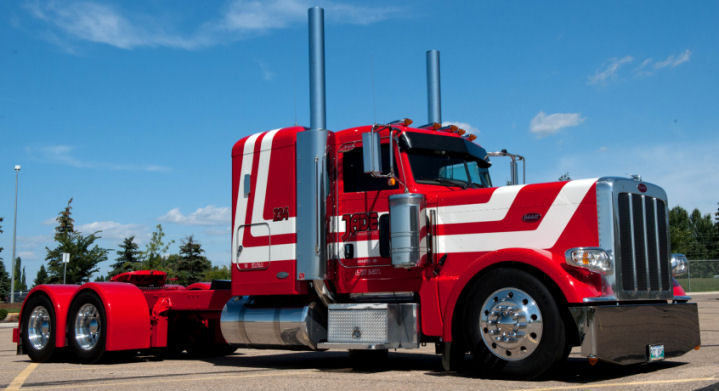
A modern example of a Peterbilt 234 truck
From the roads of the USA we next go to the skies (and beyond) of the USA. The Space Shuttle is not listed in the aeronautical section as I do not consider it to be primarily an aircraft. With more and more flights into outer space there was an increasing need for a reusable space craft capable of deploying satellites and ferrying supplies to the growing International Space Station. Six examples of the Space Shuttle have been constructed but the first - "Enterprise" did not fly into space and was used as a gliding and landing test bed. "Enterprise" first took to the skies on the back of a modified Boeing 747 in February 1977 and the first orbital flight was by "Columbia" in 1981. Two shuttles have been destroyed in accidents - "Challenger" in January 1986 and "Columbia" in February 2003. The term "Space Shuttle" really refers to the two reusable solid rocket boosters, the expendable external fuel tank and the orbiter vehicle itself. The Space Shuttle was retired in 2011 after thirty years or service and undertaking 135 missions.
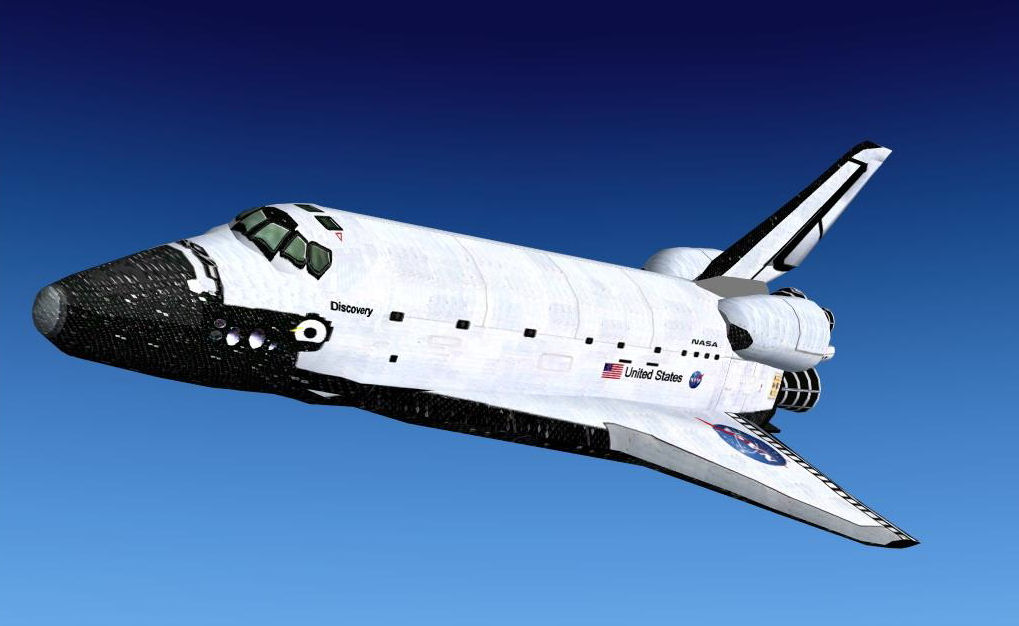
The Space Shuttle Orbiter "Discovery"
From the atmosphere and beyond we now dive to the depths of the sea with the Russian Typhoon class submarine. As with the Mig 25 Foxbat it was born out of the Cold War as a platform for launching intercontinental ballistic missiles. The largest class of submarine ever to be built with a submerged displacement of 48,000 tons, seven examples were constructed from 1982 onwards. They feature triple pressurised hulls, twin pressurised water nuclear reactors, six torpedo tubes and twenty missile launch tubes. In addition to torpedoes cruise missiles could also be launched from the torpedo tubes. This type of submarine featured in the film of the Tom Clancy novel entitled "The Hunt for Red October". As with all Clancy novels the technical details are fairly accurate although the caterpillar drive system described in the film is fictitious.
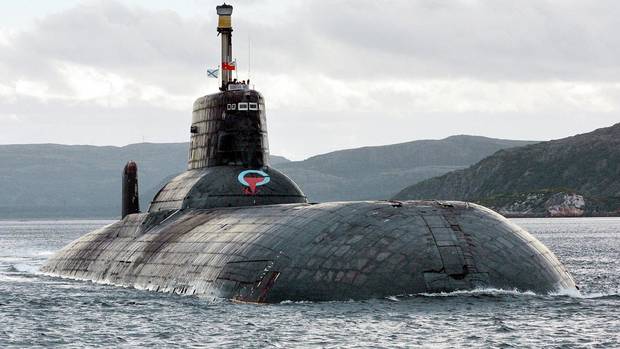
A Russian Typhoon class nuclear submarine
What do you get when you cross a steam locomotive with a tractor? A traction engine of course. They come in all shapes and sizes but my overall favourite has to the the Showman's Engine. As well as being a steam tractor these monsters had giant electrical generators mounted on their boilers to generate electricity for the funfair rides. Conventional traction engines were used for general haulage, ploughing fields or built as steam rollers. Made by firms such as Fowler and many others they were often seen up to the 1960s but now they are the preserve of steam enthusiasts such as the late Fred Dibnah.
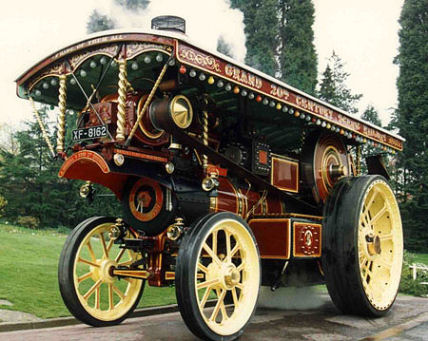
Fowler Showman's Engine

A more conventional traction engine
Last but not least is another tractor. Not just any old tractor but the Ferguson tractor. The first vehicle I ever drove was a grey "Fergie" belonging to Sid Merral with whom my parents kept their canal cruiser with at Beeston Iron Lock on the Shropshire Union Canal. The Ferguson TE 20 epitomises the traditional British tractor design and was built between 1946 and 1956. "TE 20" refers to Tractor, England, 20 horse power. The latter is not the true power produced by the engine but a calculation for tax purposes. With an engine made by Standard (also used in the Standard Vanguard motor car) over half a million units were produced at Coventry and exported all over the world. Later versions were produced with TVO (Tractor Vaporising Oil) petrol/paraffin and Diesel engines. The beautifully simple design has stood the test of time and many are still in regular use.
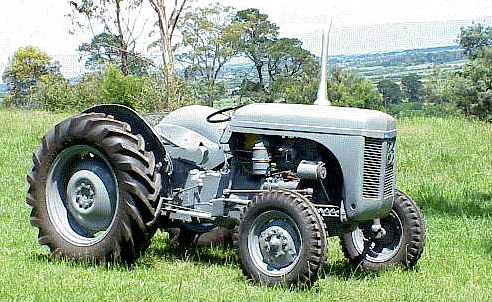
Ferguson TE 20 agricultural tractor
So there you have it. My favourite examples of transport that feature wheels and propellers. Not everyone will agree with my choices and there are many that have been left out in the interest of space. But I am thinking about expanding my top ten to a top twenty. If you have any suggestions or observations please contact me at cyril.wood@virgin.net
Click on the required section below to follow links
Wyre Heal - Wirral's Local History
|
|
|
|
Updated 05/04/2019